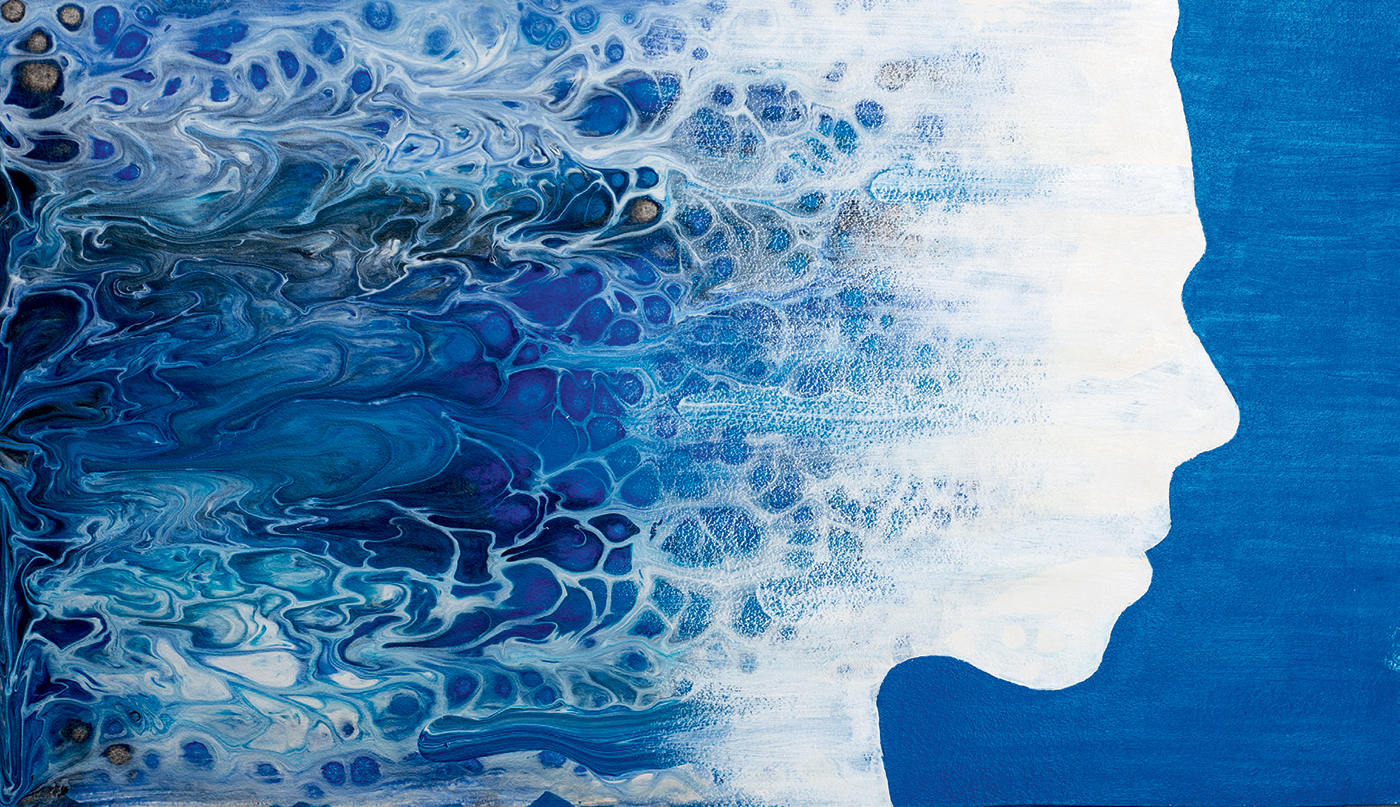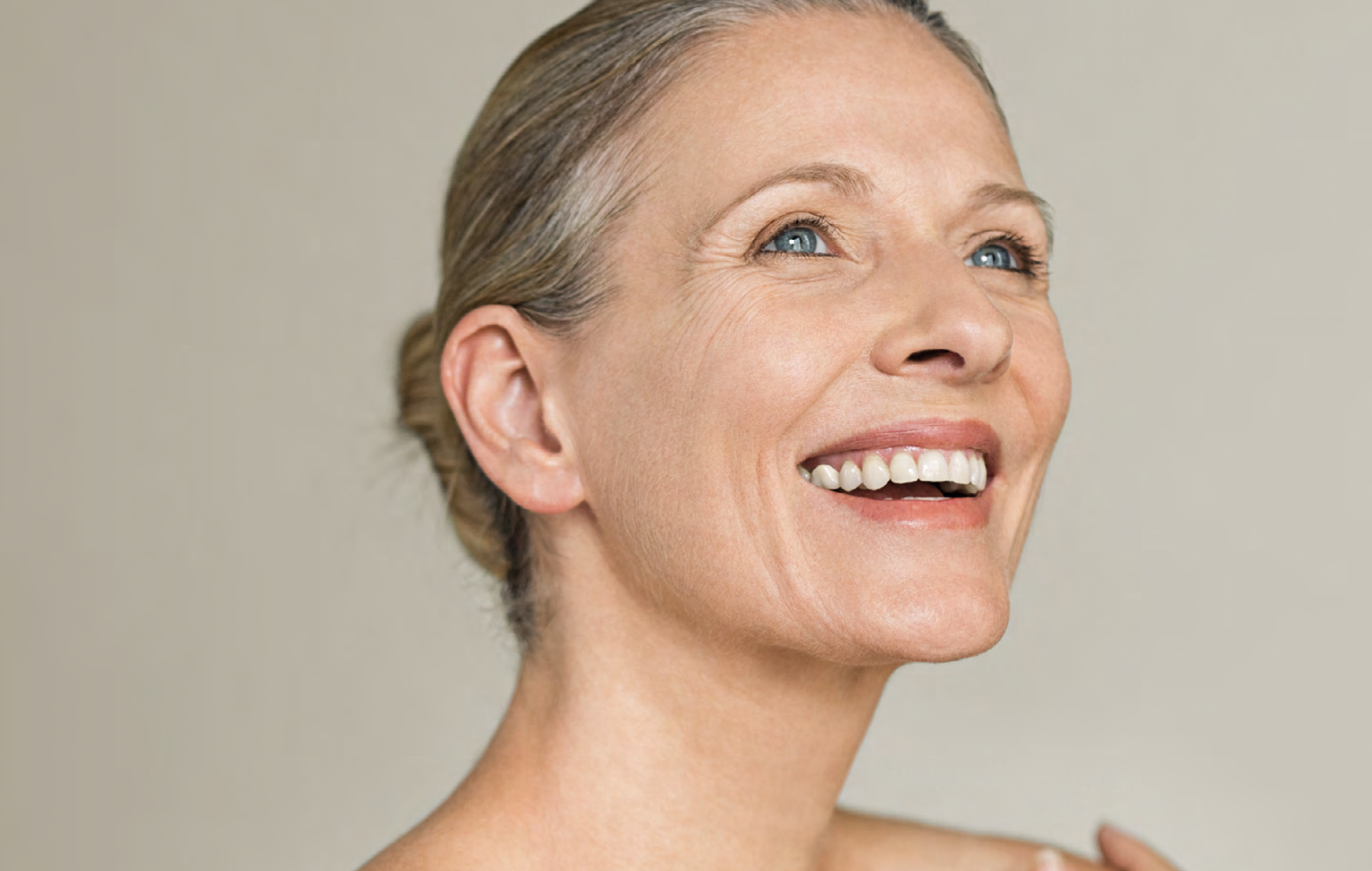Taking care of your skin isn’t nearly as complicated as we’re sometimes led to believe
By Wendy Haaf
Photo: iStock/unomat.
From ads and articles to social media posts and YouTube videos, we’re surrounded by pundits and influencers offering advice on improving the appearance of our skin, along with promoted products to try. But much of what we think we know about this underappreciated organ—which, among other things, is part of our body’s first line of defence against infection—is more fallacy than fact, much of it rooted in our culture or planted by companies seeking to sell a product. Here are the facts on nine common skin-care myths.
1. The product I’ve used for years without any problem couldn’t possibly be contributing to changes such as dryness and irritation.
“I get people coming in who say they’ve been using a given brand for a given number of years, and they can’t understand why it might be partly to blame for dry or irritated skin,” says Dr. Yuka Asai, an associate professor in the Department of Dermatology at Queen’s University’s School of Medicine in Kingston, ON. “One thing we tell them is that your product has been changing over time. Companies tweak products constantly but keep the brand and packaging the same.” As a result, the latest iteration might contain an ingredient that’s causing irritation.
Asai adds that “the skin changes with age, and some people may get greasier on the face, scalp, and chest, and dry out on the arms and legs.” Dry skin becomes irritated more easily.
For other people, genes may play a role. “Some people have hereditarily dry skin,” Asai says, “and a lot of them may not really notice this dryness until it exhibits itself more as we age, just because we tend to dry out a bit more.”
2. If you have dry skin, you need to drink more water.
There’s not much evidence for this claim, which is commonly cited in women’s magazines. (The notion that coffee and tea cause excess fluid loss has been pretty well debunked, too.) Nobody’s disputing that your body needs water. However, the amount may vary depending on factors such as exertion and the type of heating in your home. “For most people who are thirsty and drinking,” Asai says, “any extra amount of water is unlikely to do anything for you.”
3. Moisturizers reduce dryness by putting water back into the skin.
Not exactly. Typically, dry skin is due to a problem with the skin’s natural oils, which form what’s known medically as the “lipid barrier.” “That’s what keeps moisture in,” explains Susanne R. Gulliver, the senior epidemiologist and research and operations manager with NewLab Clinical Research Inc., in St. John’s, NL.
This invisible film acts much like the cover on a swimming pool, sealing in water and preventing irritants from getting in. Moisturizers and emollients are simply an artificial stand-in for, or fortification of, your lipid barrier.
Some of these products contain compounds that mimic those your skin produces. “They do have lipids in them,” Gulliver says, “so they’re ‘replenishing’ in that sense,” but otherwise, they act in the same way as other moisturizers.
A key time to apply moisturizer is after a relatively short warm shower or bath (which actually can replace some moisture), while the skin is still damp. Hot water and extended bathing and showering strip away protective oils.
How do you choose a moisturizer? For the average person, “my rule of thumb is ‘If it’s runny, it’s probably not thick enough,” Asai says. Find one you like that’s also affordable. “If you choose something that’s expensive, you’re probably not going to keep using it or use it in the volume you need,” she adds.
4. Soap is always the best cleanser.
Moisturizing is often just one piece of the puzzle when it comes to preventing or alleviating dryness. Particularly if you’re prone to dry skin, it’s a good idea to avoid products that sabotage your skin’s own armour.
“You need to maintain that lipid barrier, so use gentle products that don’t dry it out,” Gulliver says. Yet nearly every soap on the market is drying. “Soap has a double-headed molecule—one side grabs water and the other side grabs oil,” Gulliver explains, “so it’s very stripping and drying.” (Soap is still the best option for hand hygiene, however.)
Liquid varieties have an additional drawback. Since “it’s easier to grow bugs in a liquid,” Asai notes, liquid soaps contain ingredients, such as preservatives, to prevent them from becoming bacterial breeding grounds. However, those ingredients can be potentially irritating. (While everyone is different and a particular substance that causes irritation for one person with sensitive skin, for example, may not pose a problem for another, certain categories of ingredients—fragrances and dyes, for example—are especially common culprits.)
So what should you use instead of soap? Plain old warm water is often sufficient. “I ask people,” Asai says, “‘Are you rolling in the mud?’ If you are, then soap up your arms and legs for sure, but if you aren’t, you probably don’t need soap in these locations. Save soap for the smelly bits—armpits, groin, feet.”
Even then, it’s best to use a less harsh, less drying variety: Dove Sensitive Skin bar soap is one many dermatologists suggest. A gentle non-soap cleanser formulated for dry or sensitive skin is a good option if you need something other than warm water to wash your face—for example, to remove sweat or cosmetics.
But what if you have areas of oily skin? Surely that means you should be using something that will strip the excess oil away. Not necessarily, Gulliver says. “Some people have oily skin because they’re being too harsh in their cleansing routines,” she explains. In response to the destruction of the lipid barrier, the skin pumps out extra oil to compensate. “It’s a vicious cycle,” Gulliver says, “so it’s really important to be gentle.”
5. You need to follow a complex, multiproduct bathing and skin-care routine.
If that’s what you’re doing and you’re not experiencing problems such as itching, feel free to continue (even though a simple regimen would likely work just as well). “If you have the time and the money and it brings you joy,” Gulliver says, “go for it.”
On the other hand, these regimens can actually backfire. In her book, Beyond Soap: The Real Truth About What You Are Doing to Your Skin and How to Fix it for a Beautiful, Healthy Glow (Penguin Canada, 2018), Toronto dermatologist Dr. Sandy Skotnicki argues that a combination of overcleansing and using a multitude of products disrupts not just the lipid barrier but the balance of bacteria that reside on our skin, as well. She believes this is what’s driving a surge in the number of reactions to skin-care products. What Skotnicki sees in her practice appears to back up her claim.
Many people she sees with chronically dry, irritated, itchy skin, she writes, almost magically improve after adopting what she calls a “product elimination diet”: abandoning what they’re currently using, simplifying their routines, and using brands of household products (including dryer sheets and detergent) that are free of common irritants. (You can find more details at drsandyskotnicki.com/blog. You can also find a list of products certified by the Canadian Dermatology Association as free of most common allergens, with a low potential for irritation, on the website dermatology.ca.)
6. Topical products purported to prevent wrinkling have a sizable impact on how swiftly our skin ages.
If you were to create a pie chart of the factors that influence the speed of skin aging, the few ingredients that have been proven to do so would occupy only a slender slice. Genetics is at the top of the list of aging factors, accounting for roughly 60 per cent. The remainder, in descending order: “Sun exposure, smoking, and diabetes,” says Queen’s University’s Dr. Yuka Asai. (For one thing, all three can damage the collagen and elastin fibres that make youthful skin firm and elastic.) Consequently, sunscreen, provided you use it properly and consistently, is by far the most effective anti-aging product you can buy. Next on the list—though much less powerful—is a family of vitamin-A-derived compounds. “Topical retinoid use has the most evidence behind it,” Asai says. However, retinoids also cause skin to become more sun-sensitive and fragile. (A tip from the pro: Do not wax any area where you use retinoids, since skin-tearing can result.)
7. Natural products are gentler and safer than their conventional counterparts.
“There are things that are natural that can be very drying,” Gulliver says, such as cider vinegar. Moreover, “natural” isn’t the same as “safe.” “Arsenic is natural and so is plutonium,” she notes. And while products such as cosmetics and cleansers sold at major outlets may be considered safe—“You know they’re tested and regulated,” Gulliver says—the same isn’t always true for those touted as natural or those you order over the Internet from an unverified manufacturer. Essential oils—some of which are toxic to pets—are one example. “That’s an area where I would like to see more study, education, and regulation,” Gulliver says.
In susceptible people, topical exposure to essential oils can lead to immune-based skin reactions. “We have seen a big increase in the number of allergies to essential oils,” Asai says.
8. A “base tan” protects against sunburn.
No, it doesn’t, Asai stresses: “It’s like giving yourself a little bit of radiation so you don’t get a radiation burn.” A tan offers next-to-no protection from UV rays, and lack of sunburn doesn’t signal absence of harm: any degree of tan is a sign of sun damage.
9. I use an SPF-60 sunscreen, so I need to apply it only once. (Or: My foundation has an SPF of 15, so I needn’t worry about wearing sunscreen.)
“It doesn’t matter whether it’s SPF 30 or 60, you need to reapply it” every two hours or so, as well as after swimming and perspiring, Asai says.
Frequency is one key element of getting adequate protection from your sunscreen; the other is volume. “Most people apply it too infrequently and don’t put on enough,” Asai says. Per application, you need at least two tablespoons—a dollop the size of a golf ball—to cover exposed skin.
If you’re using a spray, don’t spritz as you would with perfume: instead, imagine you’re spray-painting. “You’ve got to have a nice, even spray,” Asai explains. The final step: Smooth the sprayed areas once to release the droplets from hair and transform them into a film covering the skin. “You don’t have to rub it in,” Asai says, “but you need to wipe it once to get it on the skin.”
As for relying on an SPF-augmented foundation, the problem is that to protect your skin sufficiently, you’d need to apply it as often and as liberally as regular sunscreen. “That’s pretty cakey makeup if you’re going to use it as a regular foundation,” Asai says.
However, a range of products offer alternatives. “Quite a few companies now have a tinted sunscreen,” she says. “There are also powder sunscreens available: you can do your makeup and just put it on top.”
What if you’re outdoors, doing activities that cover your hands in guck so that smoothing on a spray or lotion is inconvenient? “I have people who go fishing and say they’re not going to reapply sunscreen because their hands are covered in fish guts,” Asai explains. One solution is using sunscreen that comes in a stick similar to a deodorant or antiperspirant stick.
When it comes down to it, as long as you’re taking appropriate precautions to protect against the sun, caring for your skin doesn’t have to be complicated or expensive. “Like anything else, it’s not one-size-fits-all,” Gulliver says. “It’s about what works for you, your lifestyle, and your environment.”





